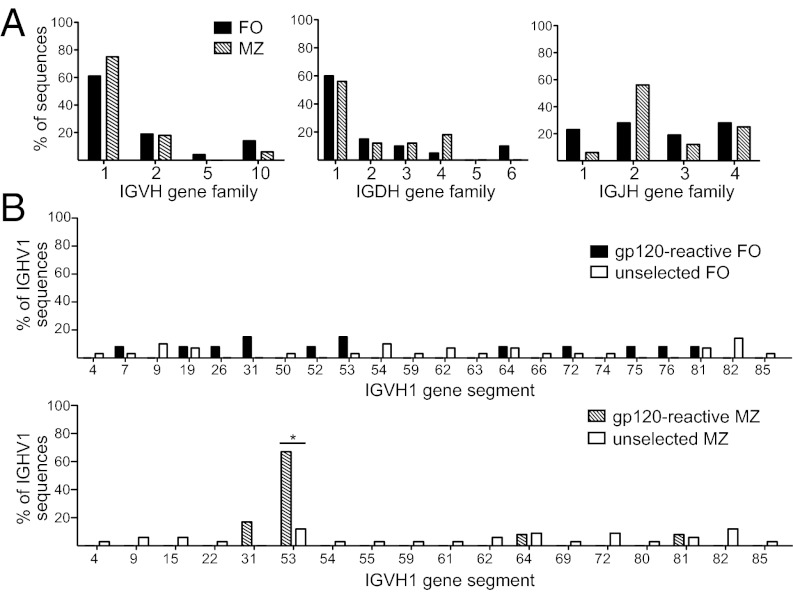Fig. 2.
Mouse MZ B cells repeatedly use the same IGHV gene to encode antibodies that recognize gp120. Hybridomas were generated from LPS-stimulated naïve FO and MZ B cells (five independent fusions from B-cell populations sorted from four to eight mice each). Hybridomas were screened for gp120-reactivity by anti-gp120 ELISA. Reactivity against the blocking reagent was excluded by ELISA performed with BSA in parallel with fish skin gelatin. Only 24 FO and 16 MZ hybridomas showed reactivity to gp120 under both conditions and were considered positive. The Ig heavy chain of each hybridoma was identified using a PCR strategy that selectively amplifies most mouse VDJ rearrangements. (A) Heavy-chain V (Left), D (Center), and J (Right) gene families used by FO (solid) and MZ (hatched) B cells to recognize gp120. (B) IGHV1 family member use in gp120-reactive FO (solid; Upper) and MZ (hatched; Lower) hybridomas and antigen-unselected controls (open). Antigen-unselected controls were generated by sequencing Ig genes from bulk cDNA of LPS-stimulated FO and MZ B cells. *P = 0.0108, Fisher’s exact test.

